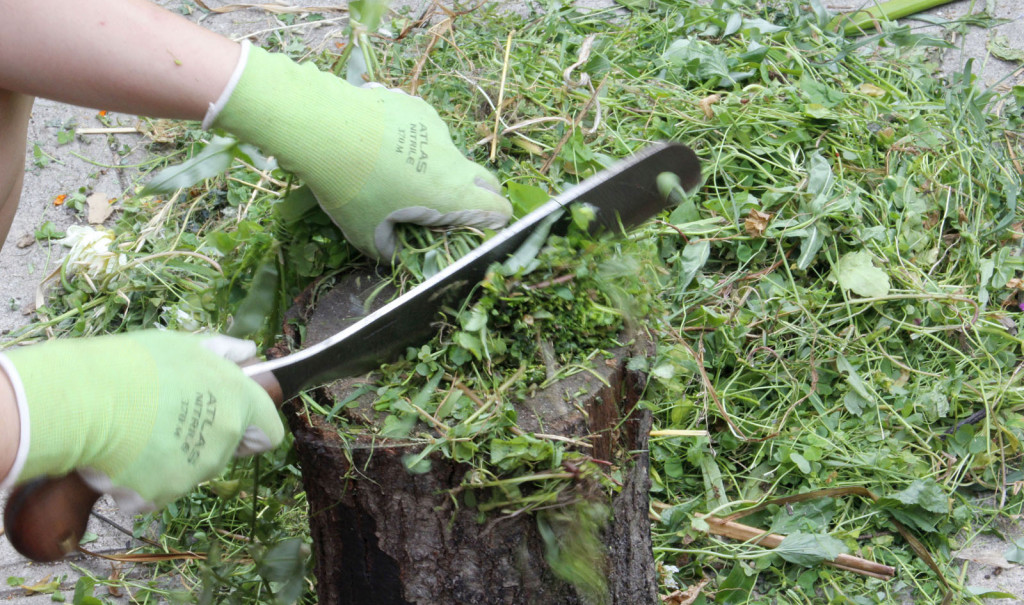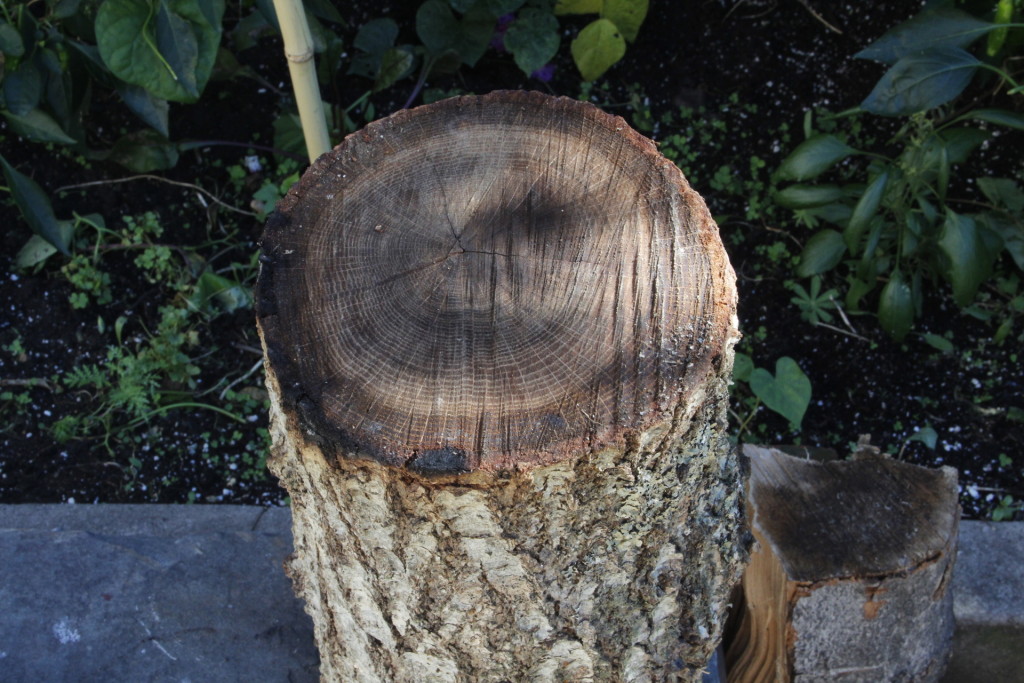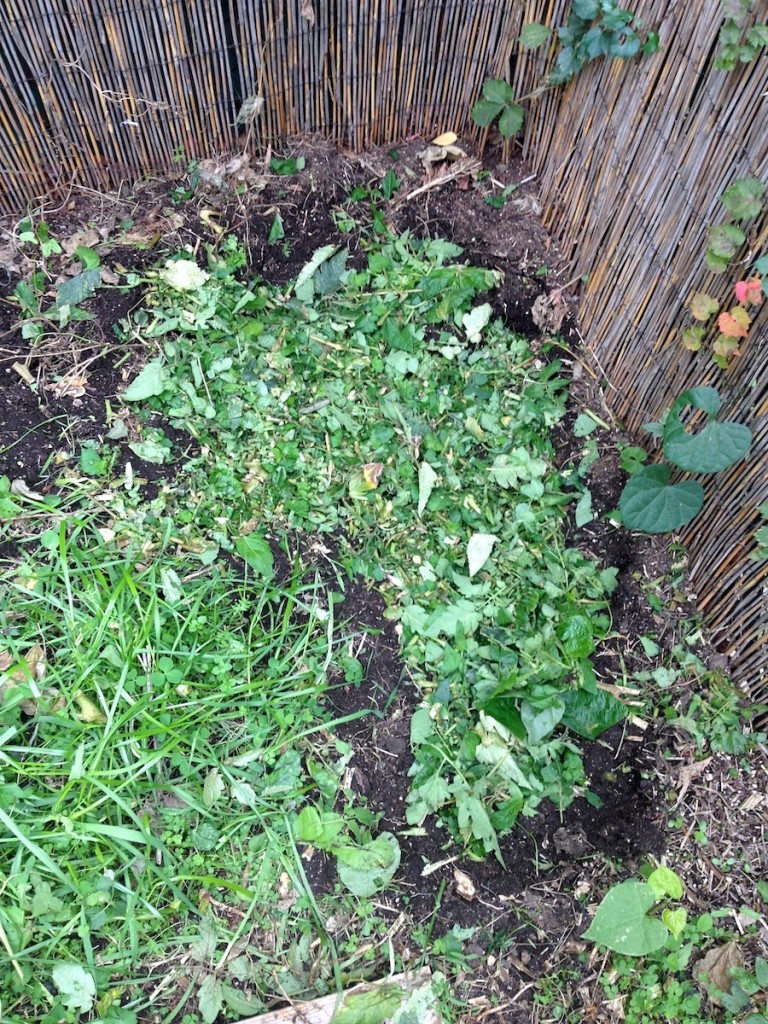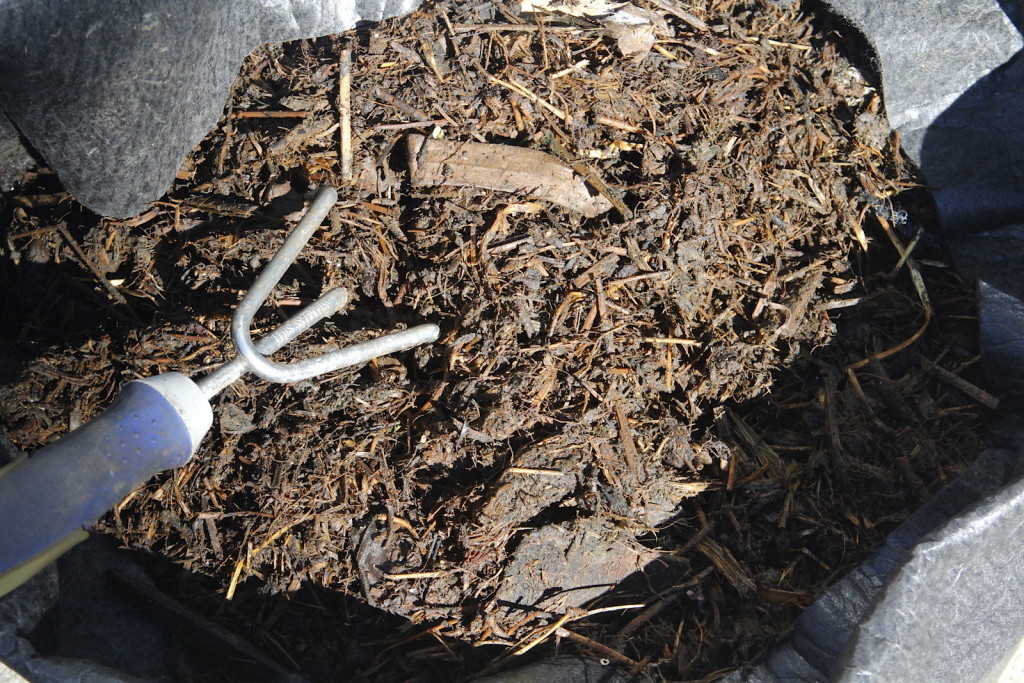
This is the most common question I hear from friends. I think it might be because people who have gardened, or like the idea of gardening, or who have never gardened for that matter, have all heard of or tried composting. It seems to be a kind of romantic touchstone that people identify with building a greener planet, like recycling. Perhaps it is easier to envision throwing your food scraps onto a pile than it is to imagine digging in the soil? Not really sure why it’s such a popular question. Of course, we are fans of this process—composting is a wonderful thing.
Having said that, our composting operation is new, and very much contained, for a few reasons. First, we have a lot of pests in the area—raccoons, bugs, squirrels, etc… and we don’t want to attract them any more than we already do. For this reason we don’t compost food from the kitchen. If we lived in the country, it would be another matter.
Second, we have very limited space. Our bed space is devoted to plants, and our other space is devoted to storage. The rest is where we stand when we’re admiring our handywork.
Third, in my experience, composting takes a long time to break down small amounts of material, because it never gets to temperature, and the result is almost too little to be useful. You also need more than one compost container so that the finished stuff does not get mixed with the fresh stuff. The tiny amounts of waste material I added to a homemade composter a few years ago never built up enough critical mass to heat up. By winter’s start, I just had a composter with a few handfuls of slimy moldy food. Not worth the effort in such small amounts, I think, when there are better options.
Fourth, we have local farmer’s markets and the New York City pickup of organic waste, which does get properly composted.
Fifth, we have the beloved Gowanus Canal Conservancy a few blocks away. They are world-champion composters, and we regularly bring them garden waste, larger food scraps, and anything else that can be composted. They compost tons of material that local residents bring to the farmer’s markets for dropoff each year. We also buy finished compost from them to complete the cycle. More and more cities have local compost operations like this. There are times when the GCC has far more than they can use in their stewardship operations. I suggest you ask around, you’ll probably find a local organization who can help you out.
But before you all think I’m going to gardener’s hell for not composting (probably one of the nicer corners of hell, I would guess), let me add: we are composting!
We are sheet composting. This is a method where instead of buying an ugly $60 plastic tub from Home Depot, or a $400 stainless steel cadillac model from Williams-Sonoma that will update you on the ammonia levels via text message while you savor truffled scamps at your next farm-to-table awards dinner, or building the $10 sideways-trash-can-with-holes-drilled-in-it that I made a few years ago, you basically chop that stuff up and bury it. (Scamps are a delicacy here in Brooklyn.)


Well, perhaps it’s a hybrid between sheet composting and vermicomposting (worm composting). A couple of years ago I added a thousand baby worms to the soil. They’ve been building their silent underground army since then, and I am, literally, their overlord.

All we do is take raw material we want to compost, chop it up on the ol’ chopping block, and bury it in sheets along with some old newspaper or cardboard. The prolific earthworm population we have cultivated over the last two years takes care of breaking it down between seasons.

It seems to work. This year we have added a step where we pre-compost the material in a dark corner of the garden above ground, which greatly reduces its volume. So instead of going freshly chopped into the soil, it will be partly decomposed when it goes in. It’s in one of those soft pots, which is air-permeable and takes up little space when it’s not full. I turn it periodically and even throw in a worm or two whenever they volunteer themselves in the garden.
By fall, it will all be layered into the soil. What doesn’t go in the ground are the leaves of diseased plants. Also left out are bits of aggressive weeds such as Japanese Knotweed and Morning Glory, as well as hops cuttings, which might spread rhizomatically underground. Those trimmings all go to larger operations which will build up enough heat in the pile to kill off anything that we wouldn’t want to re-introduce.
This also reduces the amount of bagging and dragging of giant piles of garden waste that we have to bring through the house and put at the curb for pickup, which is only once a week. I find sheet composting to be a good way to compost in our situation, but I do supplement with locally made stuff for good measure.
